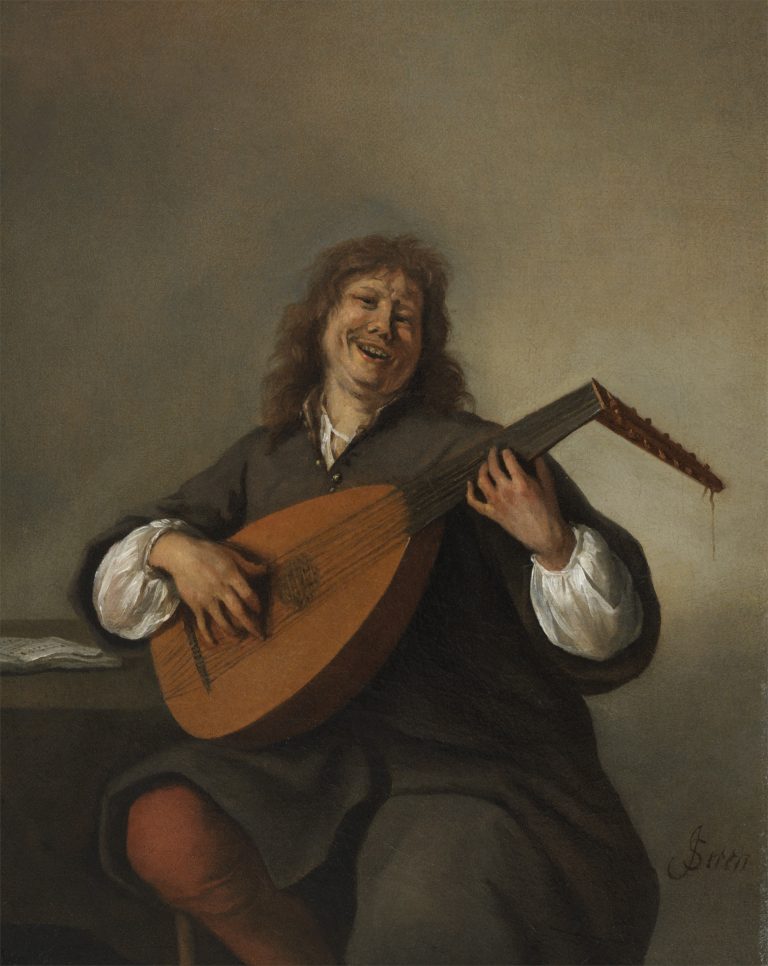In this painting Jan Steen has portrayed himself dressed informally, laughing, and playing the lute. He wears a large gray coat, with ample room for his shirt sleeves, and red leggings. A songbook, to which he pays no attention, lies on a table at the left, which is the only piece of furniture to be seen. Although this small self-portrait is difficult to date, it is probable that Steen executed it in Haarlem around 1664. The definition of the face is comparable to that of the fool in The Rhetoricians in Brussels, which dates from the same period.1
A comparison between the Leiden Collection painting and Self-Portrait Playing the Lute in the Thyssen-Bornemisza Museum in Madrid (fig 1), painted around 1666–68, reveals two striking differences.2 First, in the Madrid painting Steen presents himself decked out in early sixteenth-century attire emphasizing the theatricality of the scene,3 whereas in the Leiden Collection work he is dressed in contemporary garb. Although Steen often posed in comic roles or addressed the viewer as a cynical commentator, there is not even a hint of self-mockery or foolish behavior in this piece. The second difference lies in the degree of the finish of the two works. Steen painted the Madrid Self-Portrait Playing the Lute quickly and skillfully, almost as though he conceived it as an oil sketch before working it up in more detail. However, Steen executed the Leiden Collection self-portrait with a great refinement, particularly noticeable in the elegant hands and at the ends of the lute’s strings. The gray area behind the head is characteristic of Steen’s manner of blocking in his forms before executing the final design.4
The basis for identifying the subject as Steen is his formal Self-Portrait in the Rijksmuseum (fig 2), which must date from about 1670.5 Steen portrayed himself many times in his paintings, and the presence of the painter’s face must have been appealing for collectors, even in his own day.6 Although it is important to exercise caution when identifying self-portraits in Steen’s paintings, his presence here is indisputable.7
This painting presumably belonged to a series depicting the five senses, as a representation of Hearing. In the sixteenth and early seventeenth centuries, portrayals of the five senses were popularized by series of prints by such artists as Cornelis Cort after Frans Floris (1561) and Jan Saenredam after Hendrick Goltzius (ca. 1595).8 Jan Steen made several series of the five senses. Four pieces from one such a series are preserved at Upton House, Banbury (National Trust).9 It was common for individual paintings from a five senses series to become dispersed over time, which is certainly the case in this instance.10
